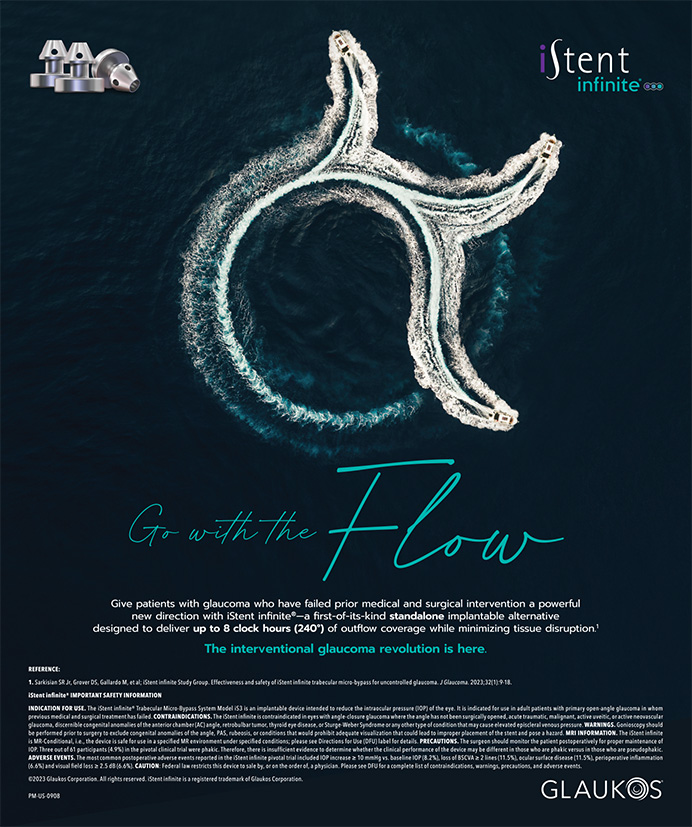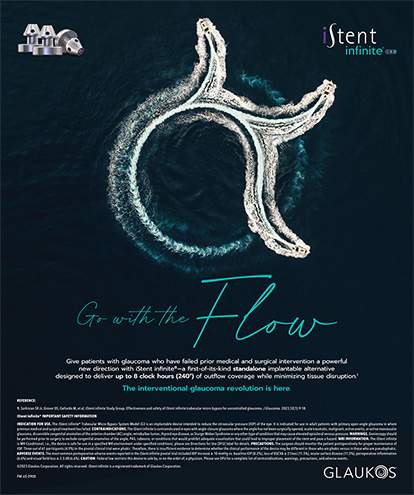
With the increased consumerization of health care services, providing a high-quality patient experience is no longer a luxury but a business priority. At Williamson Eye Center in Louisiana, we’ve always emphasized the patient experience; however, in an effort to do more than just our best, we realized we needed to ask our patients how we were doing from their perspective. We thought we were doing a great job, but did they?
Studies show that patients (and consumers of all types) who have a truly great experience are much more likely to refer people they know to that business, so we wanted to make sure we were providing exceptional service every time. We were also aware that the patient experience was made up of interactions with our entire team, not just the providers; therefore, we needed to make sure every team member was involved with whatever initiative we put in place.
GAUGING THE PATIENT EXPERIENCE
The first step in improving the patient experience is measuring the patient experience. We chose Calibrater Health (www.calibrater.com), a system that delivers real-time patient surveys and feedback via text messaging, not only for its ease of use but also for its robust feedback management platform; with Calibrater, it’s not just about collecting the data but also making sure you’re doing something with it. (I’ll get back to that in a minute.)
Considering the landscape for patient feedback, we chose a text-based platform because of the high open and response rates. Industry data show open rates as high as 99%, and the average response rate across Calibrater customers is more than 35%. Additionally, according to company data, 30-year-olds are just as likely as 70-year-olds to respond to texts; this fits well with the ages of our average LASIK and refractive cataract patients, two cohorts for which we are especially eager to provide a great experience. So, with Calibrater, we knew we’d reach our entire patient base, not just millennials. With the high response rates and Calibrater’s automated surveys, we were able to quickly implement a system that delivered a constant, steady stream of feedback from our patients—and what we learned was eye-opening.
YOU’VE COLLECTED GREAT DATA; NOW WHAT?
With survey solutions we used in the past, once the data were collected, we were on our own. Calibrater, however, calculates patient experience scores by location, individual provider, and even visit type. Combine that with the company’s response rates, and, about a week after launch, we had comprehensive, granular data on our entire organization and staff. It proved to be very insightful, and the entire management team was surprised to learn that one of our satellite locations was consistently underperforming the others and that some of our providers who we thought had high patient satisfaction rates, in fact, did not.
The Calibrater system also uses a series of algorithms to automatically classify patient comments any time follow-up is required; it combines that with a proprietary issue-tracking system to make sure no piece of feedback slips through the cracks. Whether the patient is unhappy or just asking for a refill on eye drops, Calibrater ensures that a staff member sees the comment and can follow up personally with the patient. In the past, we’d leave voicemails and just hope the patient listened to them. Now, our staff can text patients right from Calibrater’s web-based system, saving time and ensuring they get a response from us. This has been one of the most beneficial aspects of this technology because it allows us to address our unhappy customers before they vent online. Often, a patient is so appreciative that a doctor or nurse called to address his or her concerns that our biggest potential detractors become our biggest promoters.
The Calibrater system helps us ensure a great patient experience in part because it lets us know which center managers and operations folks are actually following up. We get weekly emailed reports about who is doing what, and we can see a detailed breakdown of all the steps taken to resolve patient complaints or requests.
MY ‘AHA’ MOMENT
I’ll always remember the day I recognized how valuable Calibrater was. I had just finished what I thought was a serious but overall pleasant patient encounter, during which I expressed my concerns about a possible diagnosis of idiopathic intracranial hypertension in a young mother complaining of chronic headaches. For her own education and research purposes, I relayed to her that we used to call this pseudotumor cerebri but assured her she didn’t have a tumor. The patient had the typical signs and symptoms and a very edematous optic nerve. I recommended we start treatment with acetazolamide tablets but also said more studies would be needed, as would close follow-up with neurology for head imaging followed by a potential lumbar puncture. The patient was overweight, so I also shared with her, quite delicately, that in her research she’d learn that weight loss is one of the best ways to fight this disease.
This was a new patient visit for me, as she had just moved from Texas to the Baton Rouge area. I was the first doctor she’d seen since the move, and it was apparent she was scared about this potential diagnosis. I spent several minutes counseling her and even brought one of my techs into the room who also had this diagnosis to comfort the patient. The encounter ended on a good note; we even exchanged a hug as I noticed she was teary-eyed. You can imagine my surprise when, at the end of the week, I was going through my patient comments from Calibrater and noticed this patient had given me a 0 out of 10!
Her comments included something to the effect of, “This doctor diagnosed me with a brain tumor and said I needed to lose weight. I will never go back.” I was dumbfounded. What I thought was a great patient experience was quite the opposite from her point of view. It was shocking to me that she’d write such a misinformed review, despite the time I took to educate her that she, in fact, did not have a tumor, hoping to prevent this exact response. In any case, I’m learning that sometimes it’s not what you tell patients—it’s what they remember.
I quickly called the patient directly on her cell phone. She was at first surprised and then slightly embarrassed, I think, that a surgeon would call her. I let her know that her experience mattered to me and I wanted to clear this up. I reeducated her on the disease process and answered all of her questions. In the end, she admitted it was the weight loss comment that upset her and drove her to leave a bad review. I reiterated that sometimes, as surgeons, we have to give unpleasant advice in order to serve our patients. The call ended promptly and positively.
The patient went on to get a lumbar puncture and had one of the highest opening pressures I’ve ever heard of. She is now under the care of a neurologist and is feeling better. She is also one of my biggest promoters and says that she tells new people she meets in town that I saved her life—an embellishment of course, but I’ll take that over the alternative. I kept thinking that, without Calibrater, this patient would be telling everyone she met about her terrible experience with me. Instead, it has been just the opposite. That’s the power of Calibrater Health.
GET HAPPY PATIENTS TO SPREAD THE WORD
For any practice trying to stay competitive in today’s marketplace, a positive online presence is a must. However, most eye surgeons aren’t tickled to death to have to ask a happy LASIK patient to review them on Facebook. You can have your tech do it, but how many patients will actually take the time to write the review? With Calibrater, we automatically send text reminders to patients to share their experiences online, which means more reviews on social media.
We’re also able to share positive feedback from their surveys as reviews on our marketing site, formatted specifically to improve our ranking in Google search results and even earn our listing star ratings. This is big for anyone trying to get noticed online. Google search crawlers love fresh content, and, because we’re publishing reviews that haven’t been seen anywhere else on the web, we get a constant boost in search engine optimization.
IT’S NOT JUST ABOUT THE C-SUITE
What we’ve learned from implementing this system of constant feedback is that it’s not just about a few people seeing the data; it’s about everyone on the team seeing it. The patient experience is made up of touchpoints from the entire team, so everyone on the team should see and learn from the feedback.
In addition to its issue-tracking system for the operations staff, Calibrater offers provider alerts via text message or email that let every provider on the team know how he or she is doing, including verbatim patient comments plus a blinded ranking of where a given provider stands within the organization. This can be an incredibly helpful motivating factor. It also changes the tone of the conversation with low performers from adversarial to collaborative; it’s no longer “I have bad news …,” but rather, “How can we solve this together?”
WITH GREAT FEEDBACK COMES GREAT RESPONSIBILITY
The patient experience has always been a priority at Williamson Eye Center, and thanks to Calibrater Health, we can easily see who on the team is delivering a fantastic experience and who isn’t. We measure the patient experience at every interaction and make sure everyone on the team sees who is happy and who isn’t. This technology has introduced transparency and accountability to our organization in a highly beneficial way, and, on top of that, it helps us get noticed online. This is the perfect solution for ophthalmologists looking to provide the highest-quality patient experience and grow their practice.




